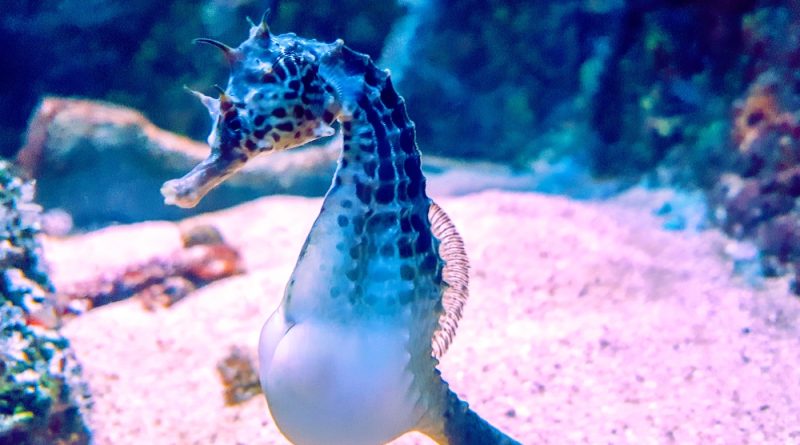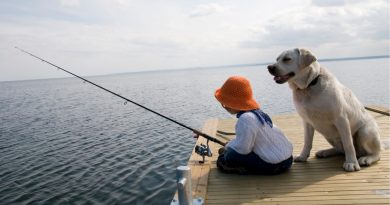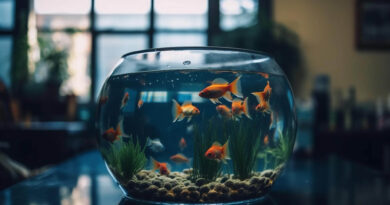Why is Seahorse considered a fish?
Seahorses belong to the class Actinopterygii, which, together with Sarcopterygii, forms the group Osteichthyes, commonly known as bony fish. Bony fish represent about 96% of existing fish and are the vertebrate group with the highest number of species and individuals. Their most notable characteristics include the bony skeleton (hence the name bony fish), dermal scales, operculum (a bony plate) covering the gill chambers on both sides, caudal fin, two pairs of median fins, terminal mouth, and swim bladders (also called air sacs).
Anyone who has seen a tilapia (an example of a bony fish) knows that it has a very different anatomy from a seahorse, but yes, they are of the same class. Come and learn about the main characteristics of these incredible creatures!
Anatomy
- Body:
The most peculiar feature of seahorses is their size, which seems to be an amalgamation of various animals: horse-like head, tail resembling that of a snake or monkey, pouches similar to marsupials like kangaroos, and eye movements similar to chameleons.
Unlike most other bony fish, seahorses do not have scales but rather an exoskeleton made of external bony plates fused to form a fleshy covering. They range in length from 1.5 cm to 36 cm.
- Vision:
The seahorse’s vision is so developed that its eyes can function independently of each other; that is, while one eye looks forward, the other eye can look backward. This ability is very effective when searching for food.
- Snout:
These animals have long, slender snouts that allow them to find food in crevices. Additionally, the structure has a certain flexibility, allowing it to unfold if the prey is larger than it. Seahorses cannot chew, so when they find food, they sniff it like a vacuum cleaner.
- Tail:
Seahorse tails are easy to grasp, allowing them to cling to plants and algae to avoid being swept away by currents and waves.
Habitat
Seahorses are found in coastal waters, such as coral reefs, bays, among algae, and in estuarine areas, such as mangroves and river courses. Tropical and temperate, covering the entire coast of Brazil.
These animals have their own territories, although one territory overlaps with others. The territory of females is about 100 square meters, and males’ territory is about 0.5 square meters.
Locomotion
Seahorses are not very good swimmers. They rely heavily on their dorsal fin, which beats 30 to 70 times per second, to propel them. The pectoral fins on both sides of the head provide stability and directionality.
Diet
Typically, they feed on small crustaceans, such as shrimp and other small marine animals. Adults can eat 30 to 50 times a day, while juveniles eat more. H. zosterae juveniles have been recorded consuming 3600 crustaceans in ten hours!
Courtship and Reproduction
Seahorses are monogamous, and there are reports of daily greeting behaviors in some species. Females locate males in their territory early every day, and they change color. The male moves around the female, and both orbit an object for about an hour. After this process, the female returns to her territory. This courtship strengthens the bond they form.
These animals were the only ones where reverse gestation occurred. Sexual behavior is traditional, as males court females and compete to mate. However, gestation of the offspring occurs in the male after the female transfers gametes to the male’s pouch. The number of eggs varies between 50 and 150 for small species and 1500 for large species. Gestation takes from 14 days to 4 weeks, and the process of giving birth to a baby can take up to 12 hours.




